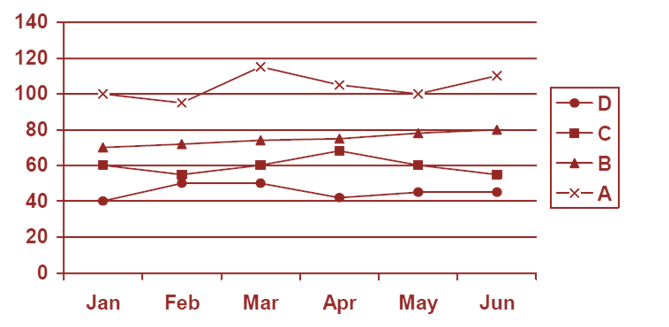
Directions: Prakash has to decide whether or not to test a batch of 1000 widgets before sending them to the buyer. In case he decides to test, he has two options:
(a) Use test I
(b) Use test II.
(b) Use test II.
Test I cost Rs. 2 per widget. However, the test is not perfect. It sends 20% of the bad ones to the buyer as good.
Test II costs Rs. 3 per widget. It brings out all the bad ones. A defective widget identified before sending can be corrected at a cost of Rs. 25 per widget.
All defective widgets are identified at the buyer’s end and penalty of Rs. 50 per defective widget has to be paid by Prakash.
Question 1. Prakash should not test if the number of bad widgets in the lot is:
(a) less than 100
(b) more than 200
(c) between 120 & 190
(d) Cannot be found out.
(e) None
Question 2. If there are 120 defective widgets in the lot, Prakash:
(a) should either use Test I or not test.
(b) should either use Test II or not test.
(c) should use Test I or Test II.
(d) should use Test I only.
(e) None
Question 3. If the number of defective widgets in the lot is between 200 and 400, Prakash:
(a) may use Test I or Test II
(b) should use Test I only.
(c) should use Test II only
(d) cannot decide.
(e) None
Question 4. If Prakash is told that the lot has 160 defective widgets, he should:
(a) use Test I only
(b) use Test II only.
(c) do no testing.
(d) either use Test I or do not test.
(e) None
Question 5. If there are 200 defective widgets in the lot, Prakash:
(a) may use either Test I or Test II
(b) should use Test I or not use any test
(c) should use Test II or not use any test.
(d) cannot decide.
(e) None
Directions for the questions: The graph below shows the end of the month market values
of 4 shares for the period from January to June. Answer the following questions based on this graph.


Question 6: Which share showed the greatest percentage increase in market value in any month during the entire period?
(a) A
(b) B
(c) C
(d) D
(e) None
Question 7: In which month was the greatest absolute change in market value for any share recorded?
(a) March
(b) April
(c) May
(d) June
(e) None
Question 8: In which month was the greatest percentage increase in market value for any share recorded?
(a) February
(b) March
(c) April
(d) May
(e) None
Question 9: An individual wishes to sell 1 share of C and 1 share of D to buy 1 share of A
at the end of a month. At which month-end would the individual’s loss from this decision,
due to share value changes, be the most?
(a) February
(b) March
(c) April
(d) June
e) None
Question 10: An individual decides to sell 1 share of C and 1 share of D to buy 1 share of
A at the end of the month. What can be the individual’s greatest gain from this decision,
due to share value changes?
(a) 5
(b) 10
(c) 15
(d) 20
(e) None
Answer
Answer 1. (a)
Answer 2. (d)
Answer 3. (c)
Answer 4. (a)
Answer 5. (a)
Answer 6: (d)
Answer 7: (a)
Answer 8. (a)
Answer 9. (d)





0 comments:
Post a Comment
MAHENDRA GURU